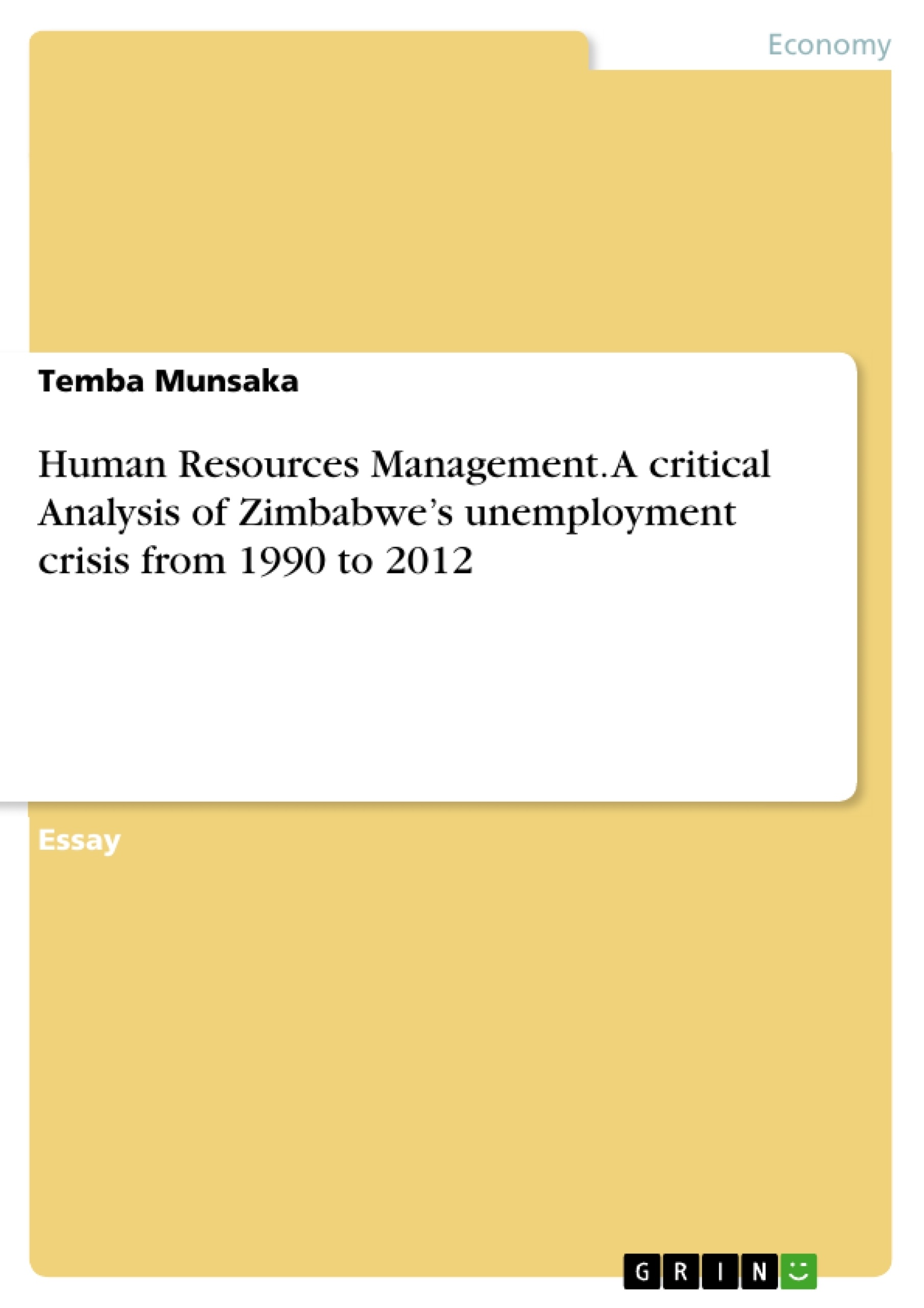Zimbabwe like most African countries faces a devastating and recurring problem of unemployment. This phenomenon is common amongst the youth that make up more than 60% of the population worldwide . This is a great challenge for all political parties as they use it to try and lure would be voters. In 1990, the official unemployment rates stood at 12% and in 2012, they stood at 7.7% . There has been a discord between the official rates and the studies done by private institutions. The private rates for the two comparative years stand at 50% and 85% respectively . It would be worth noting however that there are several rates for all these years depending on what the motive is for the research. Many of these figures contradict each other in many ways. In 2006, the ILO deduced through a study that the unemployment rate was 95% and 70% amongst the youth. The tendency has always been to follow the private rates as these tended to be for accurate and informative. The government is conservative in their rates as they try to create a positive image in the eyes of the electorate. This paper will critically look at the fluctuations in the numbers of the years, the reasons for such high rates and why they fluctuated and the possible recourse available to the central government and other stakeholders.
It is imperative however to understand at this point that the author of this paper did not embark on a study but merely reviewed the available secondary data. Unemployment has ripple effects in any economy and Zimbabwe is no exception. The socio economic dimension is deep rooted and all-consuming to the detriment of the ordinary Zimbabwean.
Table of Contents
- Introduction
- Discussions
- Causes of Unemployment in Zimbabwe
- Poor economic planning
- Political environment, regulations and stature
- Controversial Land Reforms
- Corruption
- Other Factors
- Solutions to Zimbabwe's High Unemployment
- Expanding the Economy
- Economic Policies
- Skills & Entrepreneurship
- On Job Training & Apprenticeship
- Regularization of the Informal Sector
- Curb Corruption
- Empower Small Holder Farmers
- Political Will
- Conclusion
- Referencing
Objectives and Key Themes
This paper provides a critical analysis of Zimbabwe's unemployment crisis from 1990 to 2012. It examines the causes of high unemployment rates and the fluctuations in these numbers over the years. The paper also explores potential solutions to address the unemployment problem, considering the role of the central government and other stakeholders. The key themes explored in this paper include:- Causes of unemployment in Zimbabwe
- Impact of economic policies and political environment
- Role of informal sector and youth unemployment
- Possible solutions to address the unemployment crisis
- Importance of government policies and stakeholder collaboration
Chapter Summaries
Introduction
This chapter introduces the issue of unemployment in Zimbabwe, highlighting the high rates, particularly among youth, and the discrepancy between official and private estimates. It explains the scope of the paper and its focus on analyzing the causes, fluctuations, and potential solutions to address the problem.Discussions
This chapter delves into the various factors contributing to Zimbabwe's unemployment crisis. It examines the impact of poor economic planning, including the failure of various economic recovery programs. It also explores the role of the political environment, including controversial regulations and policies. The chapter discusses the effects of corruption and other contributing factors to the unemployment problem.Solutions to Zimbabwe's High Unemployment
This chapter focuses on potential solutions to address the high unemployment rates in Zimbabwe. It outlines strategies for expanding the economy, promoting skills and entrepreneurship, and improving job training and apprenticeship programs. The chapter also emphasizes the need for regularizing the informal sector, combating corruption, empowering smallholder farmers, and fostering political will to address the problem.Keywords
This paper focuses on the key themes of unemployment, economic policy, political environment, youth employment, informal sector, skills development, and stakeholder collaboration. It analyzes the specific case of Zimbabwe, exploring the historical context and the challenges faced in addressing the unemployment crisis.- Quote paper
- Temba Munsaka (Author), 2013, Human Resources Management. A critical Analysis of Zimbabwe’s unemployment crisis from 1990 to 2012, Munich, GRIN Verlag, https://www.grin.com/document/264379



